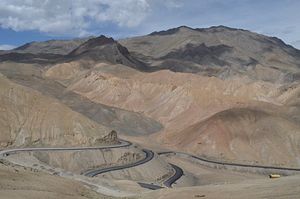As has been widely reported, the Indian government has decided to change the status of Jammu and Kashmir, the only state in Indian that was permitted special autonomy, with its own constitution and flag. While India’s constitution has provisions for a broad degree of federalism for all of its states, the special status of Jammu and Kashmir, a function of the circumstances by which it joined India in 1948, were an example of asymmetric federalism. Now, however, as a union territory, Jammu and Kashmir will actually have fewer prerogatives than other states of India. The eastern part of the erstwhile state, meanwhile, has become another union territory, Ladakh.
One result of Jammu and Kashmir’s special status, guaranteed by the now abrogated Article 370, was legislative autonomy that prevented the state from being divided into new administrative units, as had happened with other states, to give autonomy to ethnic and linguistic groups. However, most of the state of Jammu and Kashmir was not, actually, traditionally and geographically part of the cultural area of Kashmir, a valley in the western part of the state, which contains only about half the region’s population.
Most media accounts of the region are dominated by the unrest experienced by, and aspirations of, Muslim-majority, Kashmiri-speaking inhabitants of the Kashmir valley. Often lost in this narrative was the existence of other regions in the state of Jammu and Kashmir: Jammu— the Hindu-majority region in the southern part of the state dominated by ethnic Dogras — and Ladakh, a lightly populated eastern region inhabited by Ladakhis (in Leh district) and Baltis (in Kargil district), who are linguistically and ethnically related to Tibetans (the Ladakhis are Buddhist while the Baltis are Shia Muslims, unlike the Sunni Muslim Kashmiris); both languages are descended from Classical Tibetan. The people of Jammu and Ladakh have never shared the antipathy toward India that has characterized much of the Kashmiri discourse, nor have they had any desire to separate from India to become minorities in a hypothetically independent Kashmiri state.
It was somewhat surprising that Jammu and Kashmir was bifurcated and not trifurcated, but historically and geographically, the Jammu and Kashmir regions are more closely linked to each other than either is to Ladakh — the British sold Kashmir to the Maharaja of Jammu, Gulab Singh in 1846, thus creating the princely state of Jammu and Kashmir. In all likelihood, the Indian government probably wished to avoid the impression that they were cordoning off the Muslims of Kashmir in their own bantustan, and maintained a level of demographic balance by keeping Jammu and Kashmir together. However, Ladakh is sufficiently different and remote to justify its administrative separation from the rest of Jammu and Kashmir.
Ladakh, while proximate to the Jammu and Kashmir regions, is a world away culturally, historically, and politically. Many of the geopolitical, security, and religious issues that have rocked the rest of Kashmir have bypassed Ladakh. Thus, Ladakh’s leaders, especially the Buddhists of Leh, have long demanded the political separation which they have now achieved, in order to rebrand and separate themselves from the “shadow,” and notoriety of Kashmir, though the Muslim leaders of Kargil would have preferred to remained with Kashmir, despite speaking a Tibetic language.
Ladakh is a high-altitude, remote, mountainous desert that sometimes seems as though it is not of this earth. It is dotted with active Tibetan Buddhist monasteries, and the settlement of Dras in Ladakh is the second coldest inhabited place in the world. Its lakes and mountains are increasingly popular among tourists. Like Bhutan and Sikkim, its heritage derives from the ancient Tibetan Empire which reached its height in the 9th century, but was subsequently not ruled by the central Tibetan government. The Namgyal dynasty ruled an independent Ladakh from 1460 onward, and the region only entered the Indian political sphere in the 1830s when it was conquered for the Sikh Empire by General Zorawar Singh in 1834. After a war between between the Sikhs and the Qing Dynasty of China in 1842, it was administratively attached to Kashmir, and subsequently to the princely state of Jammu and Kashmir upon its inception in 1846.
Given its history and cultural and geographic distinctiveness, Ladakh’s new status is a welcome development. The Kashmir dispute, in all its complexities and ups and downs, with its various constituent parties, is an issue that will take time and effort to resolve. But Ladakh, and its destiny, should be sundered from Kashmir’s and it should be allowed to develop in its own unique manner.

































